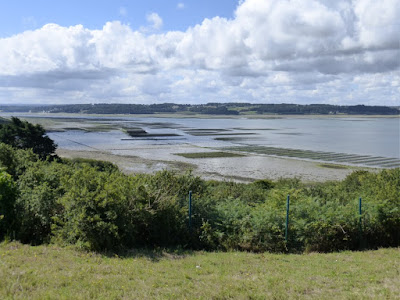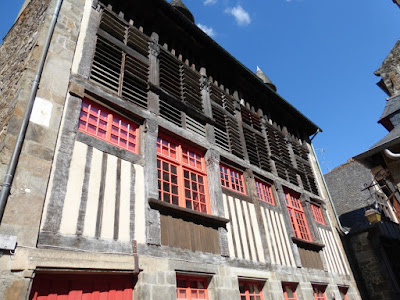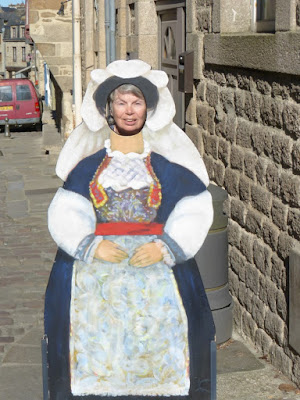The largest of Brittany's ancient sites, and the oldest of human buildings, is the great cairn at Barnanez, on the Bay of Morlaix in Finisterre. We thought it would be a fitting place to end our westward journey and to begin heading back to Amsterdam. Barnanez is a giant stepped tumulus, dry stone construction, more than 200 feet long, 70 feet wide and 25 feet high. About 14,000 tons of mostly local stone. It contains 11 passage-way tombs. Some of its megaliths exhibit neolithic art. The first phase of construction was about 4800BC, with a second major phase a millennium later. It was thought to be a neolithic tumulus as early at 1850--so many of the hills one sees in Brittany turn out to be man-made--but not really "explored" until it became a quarry, for paving stones, in the 1950s. A deep gash occurred, revealing two or three of the chambers. In any event, it became public property and was thoroughly explored and researched. Andre Malraux, the Minister of Culture then, called it the Parthenon of the neolithic world. It's actually in much better shape than the Parthenon of the classical world.
 |
There is a small museum at the entry, with good displays; here is an over-view
of the structure |
 |
You can't really go inside something like this, so nearly all the chambers are sealed
off now; thus the photographs in the museum |
 |
Some of the art work; all of it in the sealed chambers (makes you realize what a
privilege it is to go inside a place like Gavrinis) |
 |
| Anyhow, there it is, sloping down the hill, the stepped nature in view |
 |
Overlooking the Bay of Morlaix--which would not have been a bay back in the
day, but rather a fertile plain--the seas have risen, and there are megaliths now
under the waves |
 |
| But the oyster farms are good |
 |
| One of the sealed entrances |
 |
| Another |
 |
| One sealed only with bars |
 |
| You can see through to the other side |
 |
| Looking back up hill |
 |
| Rounding the corner; note megaliths |
 |
| Now on the excavated side...the gash |
 |
| The one chamber you can make your way through |
 |
The gash revealed not merely the chambers but the false domes
over them, nearly corbelled |
 |
| Thus |
 |
| Us, there |
 |
| Foundation work |
 |
| More up close |
 |
| Last look at a pretty singular place |

























































